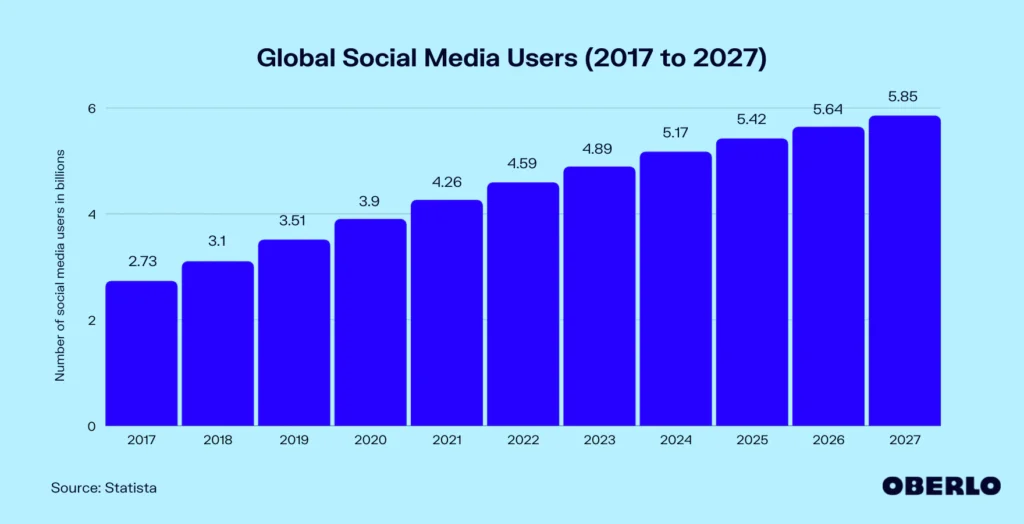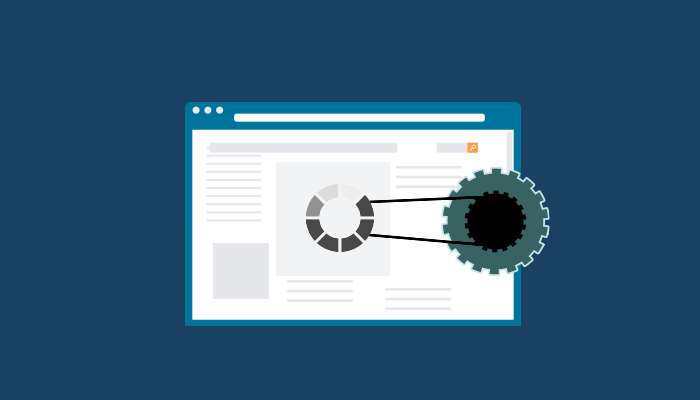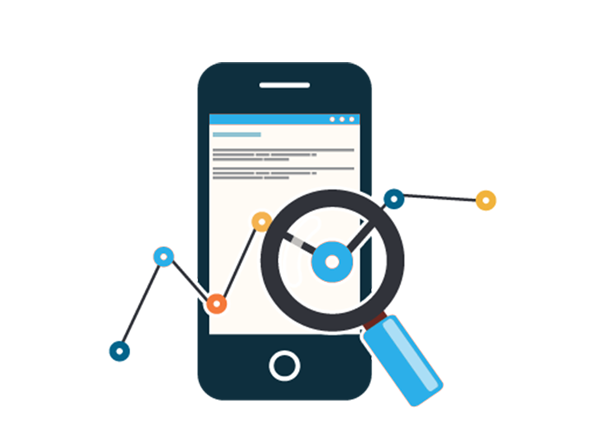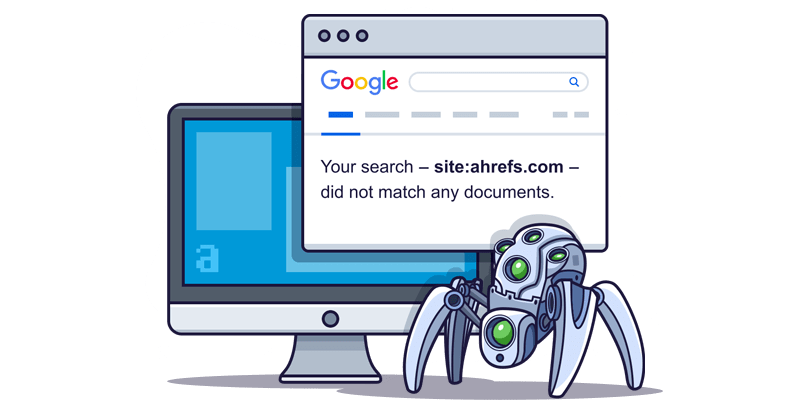Are you planning to rank your website? If yes, you need to know about SEO. It helps you rank higher in the search results. You can also dominate your competition on Google and other search engines. SEO stands for “search engine optimization.” This blog post gives basic information on search engine optimization for beginners in 2025.
Search engine optimization (SEO) increases a website’s visibility. It also improves its ranking on search engines like Google, Bing, and Yahoo. You can do it by researching keywords, optimizing content, and building links. By doing this, businesses can get more visibility on search engine results pages (SERPs) and more visitors to their websites.
SEO is essential in today’s digital world. More and more people use search engines to find what they need. Therefore, businesses must be visible on these search engines to be successful. Research shows that websites that rank higher on SERPs get more visitors and make more money. A well-optimized website can also help a business establish a good reputation and attract customers.
If you come to SEO to learn more about how search engines work, you will find many useful resources. There are a ton of great materials available on the web. But you need to know
This blog post will explain different techniques and strategies for improving a website’s SEO. We will cover both on-page and off-page optimization. You will gain a good understanding of how to make your website more visible on search engines. This visibility will help get more visitors to your business. Before you need to know everything, you need to understand the search engine algorithms.
Basics of Search Engine Optimization for Beginners in 2025
Search engine optimization, or SEO, is a process to improve a website’s visibility on search engines. This helps in ranking on search engines like Google and Bing.
By optimizing various elements of a website, businesses can improve their site’s visibility. This includes its structure, content, and keywords. These changes can increase the chances of their website appearing at the top of the search results for relevant queries.
SEO is crucial for any business that wants to be found online. It’s also an ever-evolving field, with new trends and best practices emerging regularly.
For beginners in 2025, it’s essential to understand the basics of SEO. They must learn how to implement these basics effectively to drive more relevant traffic through search.
By staying up-to-date on the latest SEO trends and best practices, beginners can improve their website’s visibility. They can increase their online presence. Ultimately, this will drive more conversions and revenue.
Learning SEO can seem daunting, but it’s easier with the user-friendly Kadence theme and its SEO tools. Save time optimizing and focus on authority-building content. Kadence offers a solid foundation for SEO. Enhance content with Kadence Blocks’ SEO features. Kadence lifetime review.
Read all the sections of this guide if you are new to SEO. It will help you rank your content higher in search results. You may have heard the terms “white hat SEO” and “black hat SEO.”
1. On-Page SEO

On-page SEO is one of the major aspects of overall search engine optimization. It refers to the techniques used to optimize individual web pages. These techniques help to rank higher and earn more relevant traffic from search engines. Everything you need to know about on-page SEO In this section, we will cover some of the most important on-page SEO techniques, including:
a. Title tags and meta descriptions

Title tags and meta descriptions are unique tags in the code of your website. They tell search engines what your webpage is about.
- The title tag is a short sentence. It describes your webpage’s main topic. It should be unique and easy to understand.
- The meta description summarizes your web page’s content and gives a general idea of what the page is about.
- These tags help search engines understand your webpage and provide a short preview of it that appears on SERPs.
- It can influence how many people click on your website from the organic search results.
b. Content optimization

Content optimization is all about ensuring that your website’s content is relevant, high-quality, and accessible for search engines to understand. It involves using keywords related to your business or industry throughout your content. Ensure your content is well-written. It should provide value to your audience.
- You should research the keywords people use to find businesses like yours and then incorporate those keywords into your content.
- It’s essential to guarantee that your content is easy to read and understand. Use clear headings and subheadings. Make sure it provides real value to your visitors.
- Content optimization is an essential part of SEO. It helps search engines understand your website. This process increases the likelihood that people will find your site. Users are more likely to find it when they search for information or products related to your company.
- Surfer SEO Review 2025: Best On-Page SEO tool
- Neuronwriter review: Start content writing with SEO NLP Editor
c. URL structure

There is an important thing to keep in mind when it comes to the URL structure of your website. Both search engines and users will look at them.
- A clear and concise URL that includes relevant keywords can improve your website’s visibility on search engines. It also makes it easier for users to understand the page’s content.
- It’s important to avoid using special characters in your URLs. These characters can make the URLs difficult to read. They can also negatively affect your website’s SEO.
- To optimize your URLs for search engines and users, keep them short and simple while incorporating relevant keywords.
d. Header tags

You use header tags like H1, H2, and H3 to organize and format the content on your webpage.
- These tags help search engines understand the structure of your content and can improve your webpage’s overall relevance and usability.
- Use H1 tags for the page’s main title. Use H2 and H3 tags for subtitles and subheadings. Including keywords in these tags can help with search engine optimization.
- Each page should only use one H1 tag. You should strategically use it to indicate the main topic or focus of the page.
- Using header tags correctly can improve the readability of your content. It also makes it more accessible for both search engines and users to understand.
e. Image optimization

Image optimization is an important aspect of on-page SEO. It can significantly improve the user experience. It also boosts your website’s visibility on search engines.
- Compressing images helps you to reduce their file size. It can help improve your webpage’s load time, making it more accessible to users and search engines.
- Use relevant file names and alt tags for the images. These tags provide information about the image to search engines and can help boost your website’s visibility on SERPs.
- Ensure that images have the appropriate size and resolution for the web page. It can make a big difference for mobile users or people with slower internet connections.
- Use semantically-related keywords in the file names and alt tags. It can help search engines better understand your images content and improve their relevance.
- Use caption tags to describe the image so it can be accessible to visually impaired visitors.
- Too many images on a page can slow down the page load time. Be selective with the images you use. Only include those that are necessary for the content.
f. Internal linking

Internal linking is the process of linking one page of your website to another page within the same website.
- It helps search engines understand the structure and organization of your website. This process makes it easier for them to crawl and index your pages.
- Internal linking can improve the user experience. It makes it easier for visitors to navigate your site. They can find the information they are looking for more easily.
- To implement internal linking on your website, you can include links to relevant pages within your content. Also, create a clear and organized menu. Use anchor text that accurately describes the linked page.
- Additionally, you can use internal linking to prioritize certain pages on your website. You can link to them more frequently from other pages.
- By optimizing internal linking, you can improve your website’s visibility on search engines. This will drive more relevant traffic to your business.
2. Off-Page SEO

Off-page SEO consists of techniques that increase the visibility and ranking of a website. These techniques involve building links and increasing brand awareness through other websites and platforms. Here are some points to consider for effective off-page SEO:
a. Backlinks

Backlinks, also known as inbound or incoming links, are from other websites that point to your website. They are considered an important factor in search engine optimization (SEO). This is because they indicate to search engines that other websites consider your content valuable and relevant.
Here are some ways to get backlinks:
- I am creating high-quality, informative, and shareable content that people want to link to.
- You should reach out to other website owners and ask them to link to your content.
- You can participate in online communities and forums related to your industry by leaving comments with links to your website.
- Consider guest blogging on other websites in your industry.
- I am earning links through social media by creating content that is shareable and informative.
- Link building is the hardest (and most important) part of any SEO strategy.
Note that not all backlinks are equal. Backlinks from high-authority, reputable websites carry more weight than links from low-quality websites. It’s also important to avoid buying or trading links, as this can harm your website’s SEO. Simply creating any content and adding a few keywords will not significantly improve your organic search rankings. It may not effectively increase the visibility of your business or brand.
b. Social media

Social media is an important aspect of off-page SEO. By having a presence on social media platforms, you can increase your brand’s visibility. Actively engaging with your audience drives more traffic to your website. Here are some tips to optimize your social media presence for SEO:
- Create and Optimize Profiles: Ensure your business profiles on social media platforms are complete and optimized. Focus on popular platforms such as Facebook, Twitter, Instagram, and LinkedIn. Include relevant information such as your business name, address, and contact information.
- Share Quality Content: Share high-quality, informative, and engaging content on your social media accounts. It will attract more followers, increase engagement, and drive more website traffic.
- Use Relevant Hashtags: Use relevant hashtags to help people discover your content and increase your visibility on social media.
- Build Relationships: Engage with other businesses, influencers, and customers. Building relationships on social media can lead to backlinks and increased brand awareness.
- Measure and Analyze: Use tools to measure and analyze your social media performance. It will help you understand what’s working and what’s not and adjust accordingly.
A strong social media presence can significantly improve your off-page SEO. It increases brand awareness, drives more website traffic, and improves visibility on search engines. Create and share quality content consistently. Engage with your audience regularly. Measure your performance effectively to optimize your social media presence for SEO.
c. Local SEO

Local SEO refers to optimizing a business’s online presence for location-based searches. It is important for companies that serve a specific geographical area, such as a restaurant or retail store. Here are a few ways to optimize your business for local SEO:
- Google My Business: Create and claim a Google My Business listing. It will allow you to show up in Google Maps. You can provide important information such as your business name, address, phone number, and hours of operation.
- Local Listings: Create and claim local listings on popular directories such as Yelp, Yellow Pages, and Bing Places. Make sure your business information is accurate and consistent across all listings.
- Reviews: Encourage customers to leave reviews on local directories and your website. Positive reviews can help improve your online reputation and visibility in local search results.
- On-page Optimization: Optimize your website for local keywords and include your business address and phone number on your website.
- Social Media: Create and optimize your social media profiles for local SEO. Share content related to your business and location, and use local hashtags to increase visibility in local search results.
- Optimize your website for mobile devices, given that local searches frequently occur on these devices.
- Backlinks: Get backlinks from reputable local websites. It can help improve your visibility in local search results.
You can improve your business’s visibility in local search results by following these steps. This will attract more customers in your area. Local SEO is a crucial strategy for businesses. Businesses want to appear when customers search for goods and services in their area. The study itself may be well-positioned to site rank in search results for various phrases.
d. Reviews

Reviews play a significant role in off-page SEO as they help establish trust and credibility for your business. Positive reviews on popular platforms like Google, Yelp, and TripAdvisor can improve your visibility on search engines. They can also drive more traffic to your website. Here are a few ways to optimize your reviews for SEO:
- Encourage customer reviews: Encourage your customers to leave reviews on popular platforms. You can do this by sending follow-up emails or including links to review sites on your website.
- Respond to reviews: Respond to both positive and negative reviews on time. It shows that you care about your customers and value their feedback.
- Utilize structured data: Use structured data to show your reviews on your website. It can help search engines understand your website’s content and improve your visibility on search engines.
- Monitor your online reputation: Regularly check your online reputation and promptly address any negative reviews or issues.
- Use keywords: Use keywords in your reviews and your response to reviews. It can help search engines understand your website’s content and improve your visibility on search engines.
Incorporating reviews into your off-page SEO strategy can establish trust and credibility for your business. It can also improve your visibility on search engines. This strategy can drive more traffic to your website. Encourage customer reviews. Respond to them promptly. Monitor your online reputation closely. Doing so will help you optimize your reviews for SEO. It will also improve your off-page SEO efforts.
3. Technical SEO

Technical SEO is about ensuring that search engines can easily access, understand and index your website. It involves optimizing your website’s technical elements. These elements include the structure, code, and server. The goal is to make your website more visible and easier to find on search engines.
It includes making sure your website is mobile-friendly, optimizing page load speeds and using structured data. By taking care of these technical details, you can help search engines understand your website. They can find your website more easily, ultimately driving more relevant traffic to your site.
a. Site speed

Site speed is an essential aspect of technical SEO. It refers to how quickly a website loads and responds to user requests. Search engines consider site speed as a ranking factor, as it affects the user experience. A slow-loading website can lead to high bounce rates, negatively impacting your search engine rankings.
Here are a few ways to improve your website’s site speed:
- Optimize images: Large image files can slow down your website. Compressing images helps improve loading times. Use appropriate file types such as JPEG for photographs and PNG for graphics.
- Minimize HTTP requests: Every time a page loads, multiple HTTP requests are made to retrieve all the necessary files. Minimizing the number of requests can help speed up your website.
- Use a Content Delivery Network (CDN): A CDN consists of servers distributed worldwide. These servers deliver web pages and other content. The delivery is based on the user’s geographic location. It can help speed up your website for users far from your server.
- Enable browser caching: Browser caching stores a copy of a webpage on a user’s computer. This guarantees that they won’t need to load the page again when they return to your site. It can help speed up your website for repeat visitors.
Improving your website’s speed is essential for a good user experience, and it can help improve your search engine rankings. By focusing on site speed optimization, you ensure that your website loads quickly. It becomes easily accessible to search engines. Users alike will benefit from this speed.
b. Mobile Optimization

Mobile optimization is an essential aspect of technical SEO. More people are using smartphones and other mobile devices to access the internet. Therefore, you must optimize websites for these devices.
Here are a few ways to optimize your website for mobile devices:
- Use a responsive design: A responsive design automatically adjusts the layout of your website. It adapts to the screen size of the device displaying it. It ensures that your website looks good and is easy to navigate on any device.
- Optimize page load speed: Slow page load speeds can lead to high bounce rates and negatively impact your SEO. Optimizing images, compressing files, and minimizing code can help improve page load speed on mobile devices.
- Use structured data: structured data is also known as schema markup. It provides search engines with information about your website, such as business name, address, and contact information. It can help improve your website’s visibility in search results on mobile devices.
- Optimize for local search: Many mobile users search for businesses and services near their location. Optimizing your website for local search can help improve its visibility in search results on mobile devices.
Mobile optimization is a crucial aspect of technical SEO. Ensure your website is mobile-friendly, fast, and optimized for local search. This helps improve its visibility and ranking on search engines. As a result, you can drive more relevant traffic to it.
c. Crawlability

Crawlability is an important aspect of technical SEO. It refers to the ability of search engine bots to navigate and index a website’s pages easily. Proper crawlability is crucial. It allows search engines to discover and understand the content on a website. This, in turn, helps to improve the site’s visibility and ranking on search engine results pages (SERPs). In other words, your site should be mobile-optimized for Google searchers and search engine crawlers.
- Use a sitemap: A sitemap is a file that lists all the pages on a website. It helps search engines discover new content on a site. It also identifies updated content.
- Use clear and straightforward URLs: Make sure that the URLs on your website are clear and easy to understand. Avoid using long, complex, or dynamically generated URLs.
- Ensure the correct setup of any redirects on your website. Use 301 redirects for permanent redirects and 302 redirects for temporary redirects.
- Fix broken links: Check for broken links on your website and fix them as soon as possible. Broken links can prevent search engines from crawling a website’s pages.
- Limit the use of JavaScript: Some search engines have difficulty crawling pages that use a lot of JavaScript. Try to limit the use of JavaScript and ensure that the important content is still accessible to search engines.
You can enhance the ability of search engines to discover your website’s content. This can lead to improved visibility and ranking on SERPs. Additionally, search engines will better understand your content.
d. Web Security

Security is an important aspect of technical SEO as it protects a website from potential threats and vulnerabilities. Search engines prioritize secure websites that can provide a safe browsing experience for users.
Here are a few ways to optimize your website’s security for SEO:
- Use an SSL certificate: An SSL (Secure Sockets Layer) certification encrypts the data exchanged between a website and its users. It helps protect sensitive information such as login credentials and financial data. Search engines also prefer websites that use SSL certificates.
- Keep your software up-to-date: Regularly update your website’s software and plugins. This practice can help protect it from potential vulnerabilities. It also guards against security threats.
- Monitor your website: Use tools to monitor your website for any security breaches or potential vulnerabilities. It will allow you to identify and address any issues quickly.
- Use a Content Delivery Network (CDN): A CDN can help protect your website from distributed denial of service (DDoS) attacks. It distributes the traffic load across multiple servers.
Most businesses can improve their website’s visibility and ranking and provide a safe browsing experience for users. It will help protect your website from potential vulnerabilities and security threats. Search engines prefer to show secure websites in the search results.
To get your website to the top of the search engines, focus on technical SEO. It has a primary role. It helps you navigate mobile devices by loading quickly and using structured data. SEO is a never-ending process.
You should consistently check and update your website’s technical side to ensure it always performs well for search engines. By staying on top of technical SEO, you’ll be able to increase your website’s visibility and ranking. This will ultimately lead to a better experience for your visitors.
4. Measuring and Tracking SEO success

Tracking your website’s performance on search engines is crucial. It helps in understanding the impact of your SEO efforts. It can help you make informed decisions to improve your website’s visibility and ranking.
Some tools and metrics are commonly used to measure SEO success. They include monitoring website traffic. They also involve analyzing keywords and checking your website’s ranking on search engine results pages.
a. Key performance indicators (KPIs)

When tracking the success of your SEO efforts, key performance indicators (KPIs) are a crucial tool to measure progress. These KPIs can include website traffic, search engine rankings, bounce rate, and conversion rate.
KPIs can provide insights into how your website performs and help you make data-driven decisions about improving your SEO strategy. If you see a spike in website traffic, it may indicate an issue. A high bounce rate suggests that your website’s content needs to be more relevant to the people visiting your site.
You can improve the overall user experience and increase the chances of converting website visitors into customers. Google Analytics can help you track and analyze your website’s performance and make data-driven decisions to improve your SEO strategy.
b. Google Analytics

Google Analytics is a powerful tool that can help you measure and track the success of your SEO efforts. Setting up Google Analytics on your website provides valuable insights. You can learn how visitors interact with your site. This includes information about their demographics, location, and behavior. It can help you understand what’s working well and where to improve.
- Understanding Traffic: Google Analytics is a powerful tool for understanding how visitors interact with your website. By tracking metrics such as page views, bounce rate, and time on site, you can gain valuable insights. You can see which pages are performing well. You can also identify which sections need improvement.
- Identifying Keywords: Google Analytics also lets you see which keywords are driving traffic to your website. You can use this information to optimize your website’s content and meta tags for better search engine visibility.
- Measuring Conversions: One of the most important aspects of SEO is measuring conversions. Conversions are the number of visitors who take a desired action on your website. Google Analytics allows you to track conversions through goals and funnels. This way, you can identify which pages and sections of your website effectively drive conversions.
- Analyzing demographics: Google Analytics also provides detailed information about your website’s visitors, including their location, age, and gender. You can use this information to create targeted marketing campaigns and improve the user experience.
- Tracking Social Media: Finally, Google Analytics helps you track the effectiveness of your social media marketing campaigns. It shows which social media platforms drive the most traffic to your website. You can use this information to optimize your social media strategy and improve your website’s visibility on search engines.
c. Google search console

Google Search Console is an important tool for keeping track of your website’s performance on Google. It allows you to easily monitor, manage, and optimize your website’s visibility and presence in Google search results.
- You have the ability to submit new content for indexing. You will receive notifications when there are changes in your ranking or indexing status. You can check the health of your website’s links. Find out what queries users are using to find your site.
- You can use the console to diagnose issues such as crawl errors. These issues may hinder your website’s performance. You can also submit a sitemap and robots.txt files.
- Google Search Console makes it easy for webmasters to monitor their website’s performance on Google. It also helps them take the necessary steps for optimizing it.
- You can collect the list of keywords to plan the next seo campaigns.
d. Tracking tools
There are a variety of tracking tools available that can help you measure and track your SEO efforts. Some popular options include Ahrefs, SEMrush, and Moz.
- These tools can provide information about your website’s backlinks, keyword rankings, and other essential metrics.
- By measuring and tracking your SEO success, you can understand your efforts’ impact on your website’s visibility. You can also see how it affects your ranking on search engines. You can then make data-driven decisions about improving your SEO strategy.
- SEO is an ongoing process, so it’s essential to regularly monitor your website’s performance and make adjustments as necessary.
- SEMrush Free Trial: Grab the PRO Account for 14 days
- Semrush Content Marketing Toolkit Review: Create a better Content Strategy
Frequently Asked Questions (FAQs) on beginner’s guide to SEO
What is search engine optimization (SEO)?
Search engine optimization (SEO) is improving the visibility and ranking of a website or web page on search engines like Google, Bing, or Yahoo. SEO involves optimizing various elements of a website, such as its content, structure, images, and backlinks, to make it more attractive to search engines and improve its ranking in search engine results pages (SERPs).
How does SEO work?
SEO makes changes to a website’s content, structure, and other elements that make it more attractive to search engines. It can include optimizing the website’s title tags, meta descriptions, header tags, and images and building backlinks from other websites. By improving the relevance and authority of a website, search engines will rank the website higher in their search results.
Why is SEO important?
SEO is essential because it helps improve the visibility and ranking of a website on search engines, which can drive more traffic to it. It can lead to more conversions, sales, and revenue for a business. Additionally, SEO helps establish your brand’s online presence and credibility, making it more likely that potential customers will find and trust your website.
How long does it take to see results from SEO?
The time it takes to see results from SEO can vary depending on several factors, such as the competitiveness of the keywords you’re targeting, the strength of your website’s existing SEO, and the quality and quantity of the changes you’ve made to your website. Generally, it can take several months to see significant results from SEO, but minor improvements can be seen as early as a few weeks.
Can I do SEO myself, or do I need to hire an agency?
SEO is a complex process that requires a lot of time and expertise. While it is possible to do SEO yourself, staying up-to-date on the latest best practices and algorithms can be challenging. Hiring an experienced SEO agency can be beneficial as they have the knowledge and resources to implement effective SEO strategies and can help you achieve your business goals faster.
Final Verdict on SEO basics
SEO is a crucial aspect of website success, as it helps to improve visibility and ranking on search engines. This blog post has covered several key strategies for SEO. These include on-page SEO, off-page SEO, and technical SEO. It also discusses measuring and tracking SEO success.
Key takeaways
- On-page SEO: Optimize your website’s content, structure, and images to improve visibility and ranking on search engines.
- Off-page SEO: Build backlinks and increase your website’s social media presence to improve search engine visibility and ranking.
- Technical SEO: Optimize your website’s technical infrastructure, including site speed, mobile optimization, crawlability, and security.
- Measuring and tracking SEO success: Use tools such as Google Analytics and KPIs. Utilize tracking tools to understand how your SEO efforts impact your website’s visibility and ranking.
The ongoing nature of SEO
It’s important to remember that SEO is an ongoing process, not a one-time task. Search engines are constantly evolving, and so are SEO strategies. To ensure your website stays visible and relevant, you must continuously monitor and update its SEO.
Encourage readers to continue learning and implementing SEO strategies
SEO is a vast field, and there’s always more to learn. We encourage you to continue reading. Experiment with different techniques. Implement SEO strategies to improve your website’s visibility. This will help in ranking higher on search engines. With the right approach, you can make your website more visible, attract more traffic, and drive more conversions.







Hello Satish,
I started my blog a few days back and I read tons of articles about SEO.
When I go through yours it helped in filling a few gaps which were still missing.
Already submitted for the free blogging guide.
Looking forward to learning more from you.
Keep sharing.
Thank you for another great article. The place else may anybody get that type of information in such an ideal approach of writing?
I have a presentation subsequent week, and I’m at the look for such information.
Great article. Would love to see more in the future. Thanks for such efforts.
Thanks for the info. Nice blog.Very useful and informative content. SEO is vital for any business today.